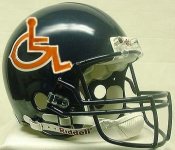Tracking
I am the VP of an OEM panel shop and have had the same problem. The difficulty with using someone else's "standard" methodology is this: Your employees work at different speeds and are at different levels savvy wise; this makes using a standard system unwise.
I suggest this: (works well for us)
On your next project, keep an extremely careful log (Excel spreadsheet for me) of exact amounts of time for each component. Then either keep the install time required on a spreadsheet and have two tables; one for components price, and one for installation cost.
Or if you have someone who can, you can do what I did, and plug these numbers into a VB (Visual Basic) program and it will do it automatically.
For an example, we build VFD systems (Variable Frequency Drives) and my program looks like this:
When the program starts, you see an empty enclosure, and to the side of it are components such as drives, line reactor, fans and filters, breakers, contactors, etc. (All the standard things you find in our cabinets). From here you would click on a component, say a drive, which would bring up an option box for you to choose voltage, horsepower, etc. it then sizes the rest of the components automatically.
So then you simply drag all the components into the enclosure to make sure you didn't forget anything, and click "Price" and there you have a total. (Our cost and a quoted price)
Of course this is only possible because I took the time to figure out exactly how long it took OUR shop to install components.
Hope this gives you some ideas....
David Groce
Vice President
www.kraftronics.com




